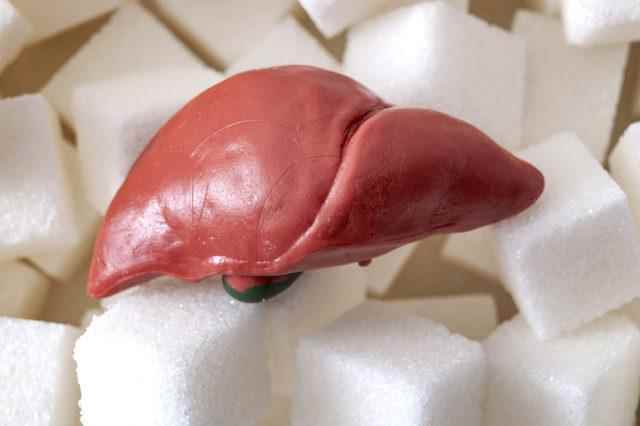Located in the upper right part of the abdominal cavity, the liver is the largest organ in the body. In addition, the liver undertakes many vital functions. Many diseases can occur as a result of damage to this organ, which works as the body’s factory, for some reasons. The common feature of many of these diseases is that they do not show symptoms in the early stages.
Among these diseases, alcoholic fatty liver disease, non-alcoholic fatty liver disease, Hepatitis B and C, Wilson, Hemochromatosis, primary biliary cirrhosis, primary sclerosing cholangitis, biliary arthrosis can be counted. These diseases primarily cause cirrhosis. Although cirrhosis is known as a disease in the society, it actually means the deterioration of the liver structure. prof. Dr. Koray Acarlı gave information about the diseases that cause liver transplantation and the importance of organ donation due to the “November 3-9 Organ Donation Week”.

LIVER TRANSPLANTATION IS THE ONLY TREATMENT IN PROGRESSIVE LIVER DISEASE
Liver cirrhosis can also be divided into stages according to its progression. In the first two stages, the progression of the problem can be minimized by providing regular physician control in patients. In treatments, it is essential to prevent the progression of hardened scar tissue in the liver and to prevent complications caused by the problem. In this process, it is important to stay away from the use of drugs, alcohol and unhealthy foods that are harmful to the liver. If cirrhosis is due to an autoimmune condition, drugs that suppress the immune system are used, and if it is caused by hepatitis, antiviral drugs are used. However, if the condition reaches an advanced level, the only treatment method is liver transplantation.

FIND OUT IF YOU HAVE FAT LIVER
In general, the most common cause of liver transplantation is Hepatitis B, Hepatitis C, and alcohol-related liver disease, while the number of liver transplant recipients has increased in recent years due to non-alcoholic fatty liver disease. This disease, known as NASH, is about to take the first place among the most common causes of liver transplantation in the world, and almost everyone in the society has fatty liver. Many people do not care about fatty liver and do not think that it will be an obstacle to their lives.

LIVER LUBRICATION DOES NOT SYMPTOMS AT THE FIRST STAGE
Initially, people with fatty liver appear to have normal liver function. In the early stages, the liver is not detected by blood tests. However, the deterioration of the structure of the liver can be understood by methods such as biopsy or fibroscan. It is a dangerous situation because it does not give any symptoms in the first place. For this reason, patients with fatty liver problems should lose weight, eat healthy and give importance to exercise in order not to go to liver transplantation. Particular attention should be paid to this, as it is one of the most dangerous diseases of the liver in both Western and Eastern societies. Scientific studies have revealed striking data on this subject. Fatty liver is also seen in people who do not have weight problems. This is the result of a completely unhealthy diet and lack of movement. While the rate of fatty liver is 15 percent in people who are not overweight, the rate of NASH is 3 percent. NASH rate is 20 percent in first and second class obese people, and NASH rate is around 40 percent in overweight people. In Turkey, 66.8 percent of the adult population is overweight and 32.1 percent is obese. Obesity fatty liver; therefore, it can bring liver transplants.

LIVE TRANSPLANTATION IS HIGH BUT NO ORGAN DONATION FROM CADAVER
Organ transplantation is one of the greatest advances in modern medicine. Since the 1960s, tens of thousands of lives have been saved and continue to be saved by organ transplantation. Today, the success of organ transplantation is at a high level. Transplantation rates from living, not cadaverous, are increasing day by day in our country. Turkey is at a very advanced level in living donor organ transplantation. Our country is struggling with South Korea for first and second place in live transplantation. However, the same cannot be said for organ donation.

ORGAN DONATION SAVE MANY LIVES AT THE SAME TIME
Although living donor transplantation rates are high, cadaveric organ donation figures cannot reach the desired level. However, organ donation is important and life-saving. Thanks to organ donation, it is possible to save someone else’s life and ensure that he or she clings to life. It is not known when individuals will need what in life. No matter how healthy a person is, one day they may find themselves waiting for an organ. For this reason, putting aside superstitions or prejudices and acting on a voluntary basis and donating organs can be a hope for the society, perhaps for one’s own loved ones. From this point of view, all efforts to attract the attention and attention of the public to the necessity of being more sensitive to the needs of other people and to increase organ donation are valuable.

ORGAN DONATION DOESN’T BAD EVERYDAY LIFE
Organ donation is not an obstacle to daily life. Organ donation is nothing like monetary donation. Maybe when donating money, individuals may refrain from donating by saying, “Maybe I’d buy a sweater.” However, there is no such situation in organ donation. Moreover, organ donation is not only economical but also spiritually peaceful in this sense. Because organ donation means that a person gives life to a different body after death and continues his life in a different body. Many people stay away from organ donation until an illness comes on their own. Then, when the desired organ cannot be found, the live transplant option comes into play. When people have liver or kidney disease, they can receive organs from their relatives.
